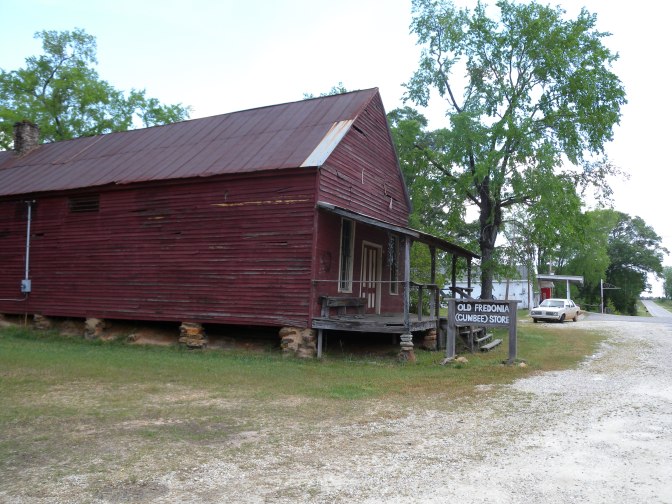Recently I came across an interesting first hand account of life in Chambers County, Alabama during it’s founding in the 1830’s written by the man that actually married Hicksey Bean, a cousin to my third great-grandfather Jesse J. Bean.
The Honorable E.G. Richards wrote a series of stories from his life in early Chambers County in 1890 for The Lafayette Sun. These articles were reprinted in the 1940’s. He recounts many interesting stories that give the modern reader a bit of the flavor of what life in frontier Alabama must have been like. He recounts how the first office holders in Chambers County were elected under a shade tree in the yard of one James Thompson. Among those elected on that April day in 1833 was my sixth great grandfather John Bean. John was elected the first Coroner of Chambers County and lived nearby on a 160 acre track of land that he claimed on behalf of his wife. The actual land record indicates the 160 acre tract was an Indian Land Allotment, verifying my suspicion that John was married to a full blooded Cherokee named Mary. The two of them appear on the 1850 census for Talladega County.
John was Jesse J. Bean’s great grandfather and he and his children has moved from South Carolina around 1809 to Morgan County, Georgia. They are listed on subsequent records as moving next to Jasper County and then on to Butts and Henry County, Georgia before finally moving onto Creek Indian lands in eastern Alabama – the area that would become Chambers County. My best estimate is that they arrived sometime in 1832. In Richards’ account, he describes an area that was very much still frontier, with Indian inhabitants up until the late 1830’s. I believe John settled somewhere near Hurst’s Store, now called Fredonia, Alabama.

During the 1830’s, Richards recounts the formation of the Slick Company. The Slicks were made up of some of Chambers County’s most upstanding citizens. Originally they were formed as a means of dealing with thieves that came into the area to steal cattle and slaves. Basically the Slicks were vigilante justice in its truest form – the original posse. What began as a helpful organization, over time, began to abuse the power they had been given. By the mid 1830’s the members of the group became fearful of having their authority challenged. In 1837 a man named Herring arrived in Lafayette. Word spread that the man was in town to file charges against the Slicks for some of their actions. Herring and his wife were staying in a hotel in Lafayette run by a widow named Elizabeth Reed. By late afternoon a mob had formed outside the hotel, looking for Herring.
After being challenged by Mrs. Reed and being shot at by Mrs. Herring, members of the mob stormed into the hotel and pulled Herring out into the street. He was taken by the mob to a tree out front of the courthouse and tied to one of the branches. The Slicks were looking to teach him a lesson, so he was given thirty nine lashes on his bare back as a warning. What was shocking to me in reading this story was that the man who whipped Herring was none other than John Bean. Apparently John was also a several term Bailiff of the Grand Jury of Chambers County, in addition to being the first Coroner. The account never verified his membership in the Slicks, but that conclusion seems obvious since he was the one handing out the punishment on Herring. Richards goes on to indicate that John laid on the lashes well with a new cowhide.
Herring was taken by the mob into the public square and tied to a tree in front of the courthouse door, about where the south gate of the court house enclosure now stands, and then received thirty-nine lashes on his bare back, well laid on with a new cowhide in the hands of John Bean, Esq., who was the first Coroner for Chambers county, and was several term Bailiff of the Grand Jury of Chambers county.
-from Reminiscences Of The Early Days In Chambers County
By E. G. Richards
Herring was told to leave town and never come back to Chambers County…which he did. As for John Bean, he eventually ended up living with his daughter Elizabeth and her husband Barnett Kinard, most likely dying in Talladega County sometime after 1850.
That is shocking. What a fascinating find, though. Wow.
LikeLike
Yeah, it was pretty cool. The funniest thing is the first time I skimmed the story I didn’t notice the whipping part, just that he was the first coroner of Chambers County. It wasn’t until I was showing it to my Dad that we noticed the rest.
LikeLike
How have I been missing your most recent posts? Just now getting caught up. Wonderful stories and pictures.
LikeLike
Thanks and where have you been lately? I’ve missed you – both here and at work…we must do lunch!
LikeLike